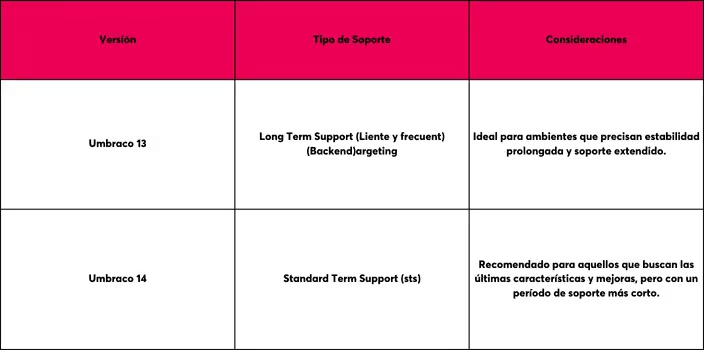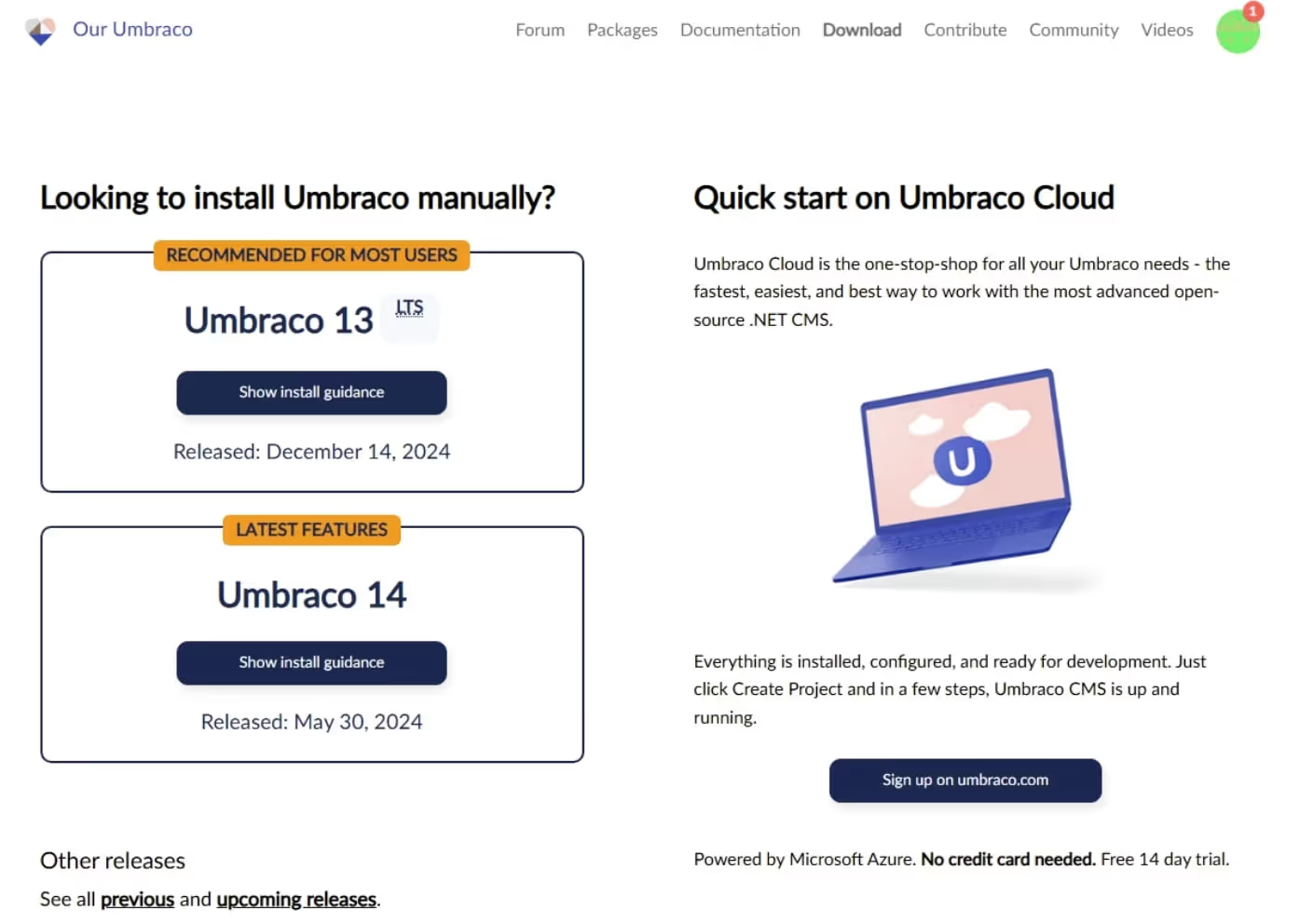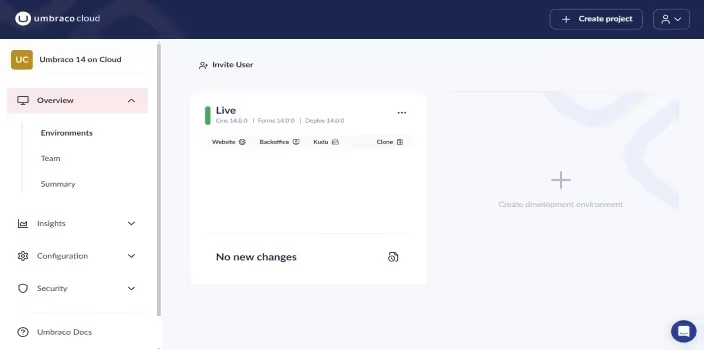Umbraco 14 is now available, here's what's new

The world of content management systems is evolving at great speed and Umbraco is not far behind. With the arrival of Umbraco 14, developers and companies have new tools to build bridges to more user-friendly and modern digital experiences.
Umbraco reinvents itself in this version, employing the principles of headless architecture and focusing even more on flexibility and interoperability. In this article, we tell you the keys to Umbraco 14, from its brand new user interface to its commitment to a future-proofed CMS.
We are going to review the improvements and features and how they can help you in your future projects
New Umbraco: everything changes so that nothing changes
In literature, “The Brown Cat” teaches us that certain changes are necessary to keep everything the same. In the world of web development, Umbraco, with its version 14, seems to imitate art.
With the need to stay relevant in an era dominated by composable and headless, Umbraco innovated its backoffice, and offers an intuitive interface, in line with contemporary content management requirements.
The improved version of Umbraco reflects a commitment to evolution without losing its essence. Now, it stands out for offering developers an API-first content platform, capable of easily adapting to various database systems and providing an exceptional user experience.
Umbraco confirms its place as a flexible and extensible platform, ideal for both smaller sites and large projects, ensuring that, even if everything changes, the Umbraco seal remains intact.
Umbraco is late, but arrives, at the Composable party
For a long time, the Umbraco community has expected a shift toward a more modular architecture. Finally, with version 14, Umbraco takes a big step in this direction: Umbraco decouples the backend from the Backoffice, embracing the concept of an API-first to offer a world of possibilities.
This breakthrough transforms Umbraco into one more platform composable (or composable) and adaptive, giving developers the possibility to think of infinite integration possibilities. Umbraco is thus established as an excellent option due to its flexible platform and wide variety of extensions.
Although it took a while to arrive, this updated version positions Umbraco as a next-generation content platform, ready to face future demands and maintaining its intense focus on effective content management.
API first, more a philosophy than a technology
“API first” is a modern approach to software engineering and application development. This trend focuses on designing and implementing the application programming interface (API) before the application itself. If someone points out that a system is “API first”, it indicates that they are building robust and well-thought-out APIs as a basis for future expansion, integration and application development.
This philosophy is much more than an adoption of new technologies, it is a cultural and operational change that puts APIs at the forefront, allowing integration with any other system or application with great ease and flexibility. By adopting “API first”, a company shows its commitment to freedom of integration, betting on interoperability and ensuring that data flows can effectively connect with other components within a diverse digital ecosystem.
It's essential, however, not to neglect security in this API-centric approach. Implementing strong access, authentication and encryption controls should be a fundamental part of the strategy to protect both the integrity and confidentiality of data shared through APIs.
Concept: API first Definition: An approach that prioritizes the creation of APIs. Key: It privileges freedom of integration. It involves: An operational and cultural change. Requirements: Robust security for data protection.

A new “Extension-first” user interface
Umbraco is already known as a flexible CMS, first, which makes it a very attractive option for developers. Umbraco's new Extension-first user interface has been designed to improve the user experience by allowing customization and integration with specific tools.
This “Extension-first” vision allows developers to create functionality adapted to their needs and ensures that Umbraco can work together with a wide variety of applications and services. The changes to this interface focus on even more intuitive content management and greater efficiency in delivering results, in line with the updated version of the software.
Key features of the new Extension-first UI:
- Personalization: Adjust the interface to the needs of the project.
- Ease of integration: Connect to specific services and tools without complications.
- Optimized experience: A clean and easy-to-navigate user interface.
This Extension-first direction, towards which the most recent version of Umbraco points, solidifies its position as an excellent option for creating small sites, as well as for large scale corporate deployments, adapting to the challenges and opportunities required by modern content management.
Now yes, a Future-Proofed CMS
In a constantly evolving digital world, the ability to adapt and expand our platforms is crucial. Therein lies the importance of being “composable”, a feature that makes Umbraco a CMS of the future. Being “composable” means that Umbraco is built with an architecture of interchangeable and independent parts that can be put together to create a complete solution. This modular nature gives developers the flexibility to customize and scale content management solutions according to the changing needs of each project.
Composable vs. Monolithic: Why is it the future?
- Flexibility: Composable systems can be easily interchanged to adapt to new demands without the need to redo the entire system.
- Specialization: It allows selecting the best components for each function, thus optimizing the user experience.
- Evolution: It makes it easy to update specific parts of the system without altering overall operation.
Umbraco, with its intuitive interface and robust support, is an example of a composable and flexible platform that is ready for the future. As content management practices develop, having a CMS that can evolve and grow with us is, without a doubt, the best choice.
As headless as you want, with a great but
Umbraco 14 and its Headless Approach: An Analysis
Umbraco 14 makes great strides in implementing headless solutions thanks to its API-first orientation. This content platform assumes that developers will prefer to work building their own user interfaces and connecting them to the CMS through APIs, which can be an excellent option for composable and flexible development.
However, the updated version may be perceived as limited in terms of page composition options compared to other content management systems that have been on the market for a longer time, highlighting a wide variety of data types and content blocks available.
The key question is whether these limitations represent a significant obstacle. This will directly depend on the specific needs of the project. If you are looking for high customization and detailed management of the user experience, the standard version may fall short of these requirements. In short, Umbraco 14 promotes the headless approach with a flexible platform, but it's important to consider the needs of the project to determine if this is the right tool or if a more mature and proven solution is required.
Standard-term Support Version (STS)
With each new version of Umbraco, developers and users are faced with crucial decisions regarding maintenance and support.
Umbraco version 14 introduces what is known as Standard Term Support (STS), which differs from the Long Term Support (LTS) offered in the previous version, version 13. This raises certain concerns among users and developers about whether and when to update.

Before deciding if change is the most appropriate option, it is essential to carry out a detailed study that considers the particular needs of the project. STS support, although shorter, may be more convenient for those looking to stay on the cutting edge of technology and take advantage of the latest updates.

Umbraco Cloud
Umbraco 14 is now available on Umbraco Cloud, thus providing a new opportunity to explore and test its latest features. This recent version includes updates to fundamental tools such as Umbraco Forms and Umbraco Deploy, offering improvements and a smoother user experience.
It's important to note that, although you can fully immerse yourself in the updated version of Umbraco, there are still components under development. Both Umbraco Commerce and Umbraco Workflow are in alpha phase for version 14, meaning that users have a taste of what's to come.
Final versions of these components are eagerly expected to be released in the coming weeks. In addition, if you are looking for more ways to customize your experience, the Umbraco UI Builder will arrive at the end of the year to further open up the range of possibilities on the platform.
Umbraco Cloud is constantly evolving to offer more robust and comprehensive options to its users. The integration and testing of these tools not only improves efficiency, but also makes it easier to manage online content.

Update, migrate or wait?
As we mentioned above... it all depends. Umbraco 14 can be a very good option for a long-term project that starts now, it can be less good for migrating a project in production, it can also be the opposite. If you need help understanding advantages and better migration strategies, go to contact with us.
Cómo podemos ayudarte
Consulta los servicios con los que te ayudaremos a conseguir tus objetivos digitales.
